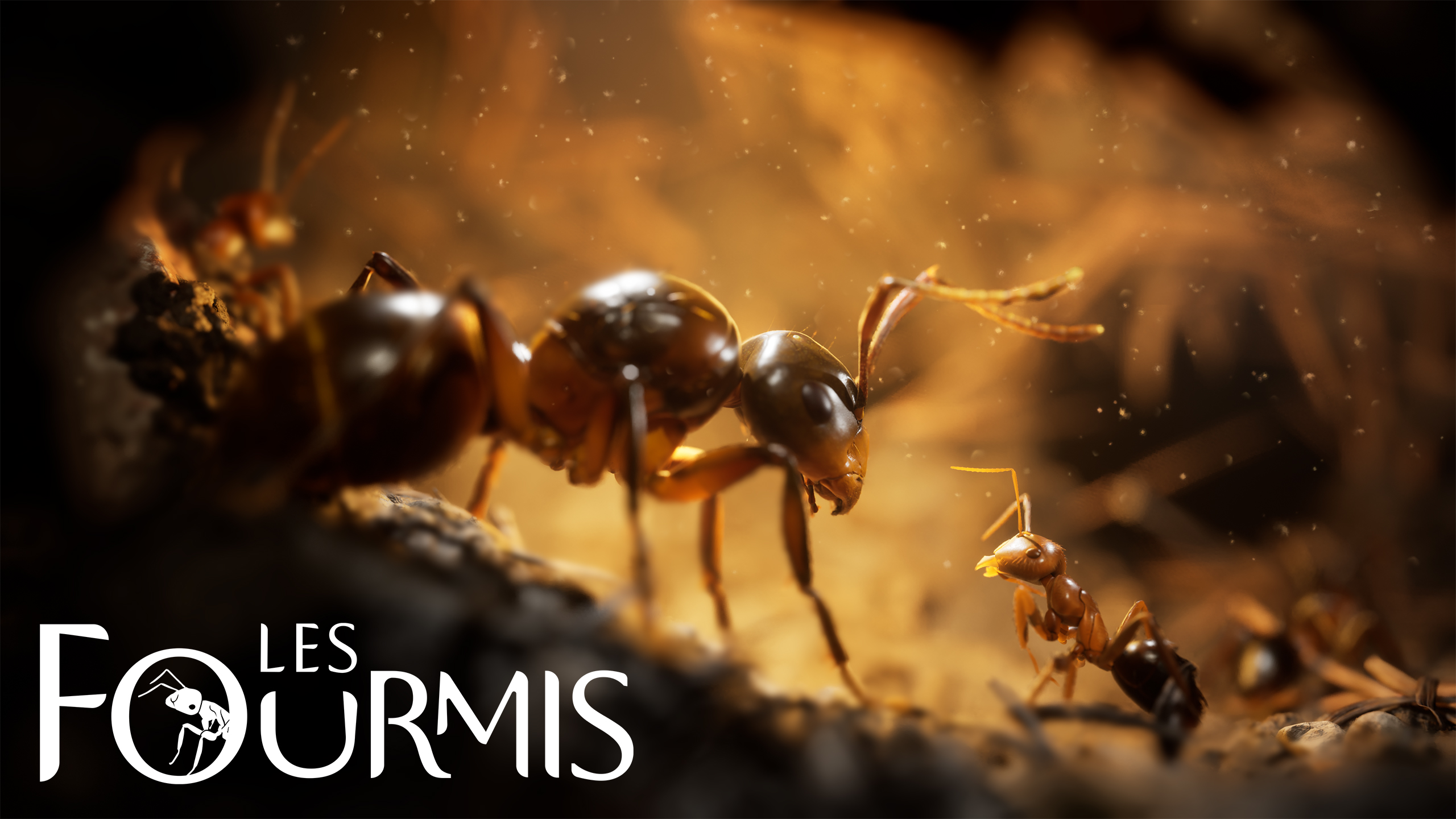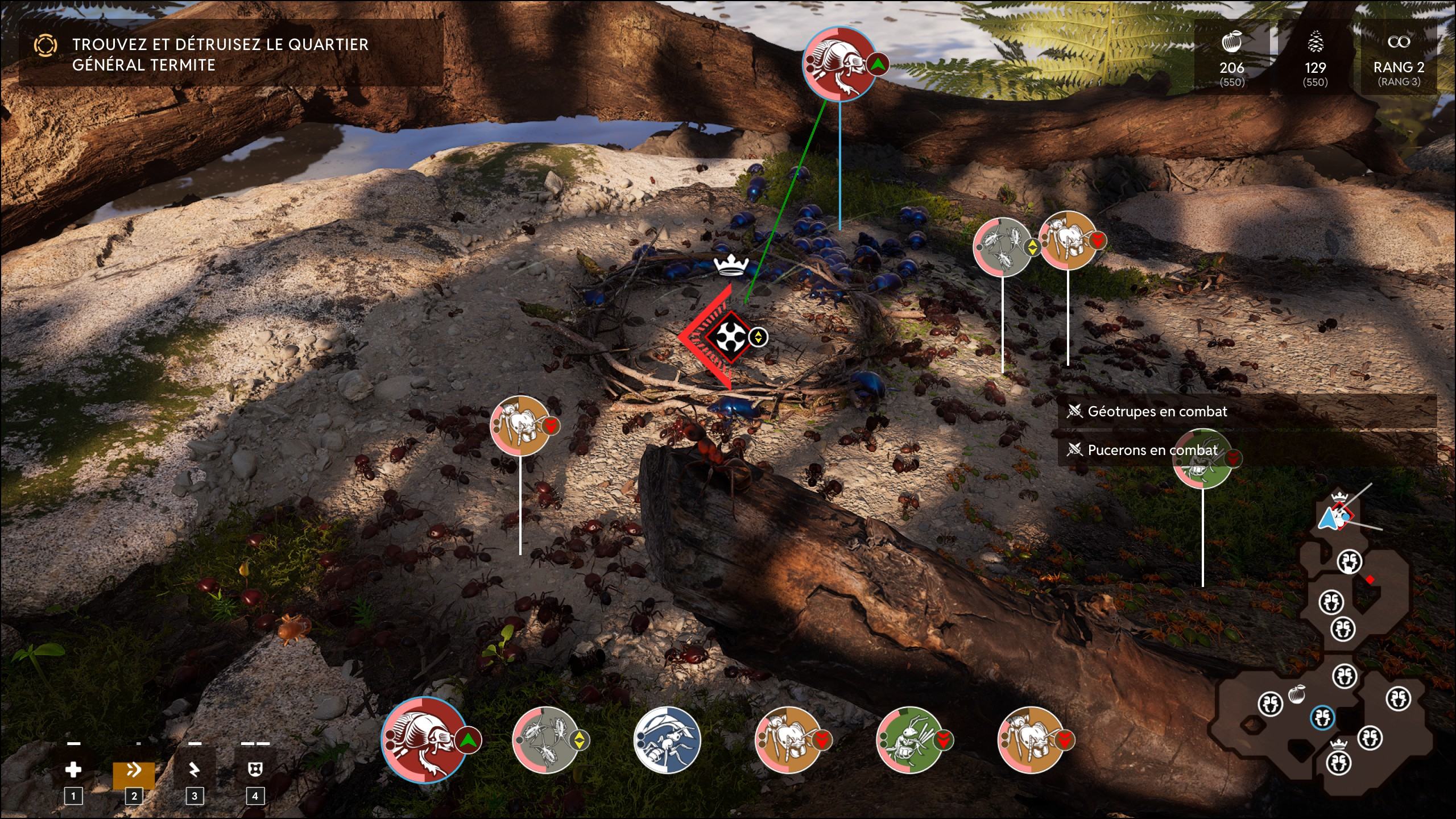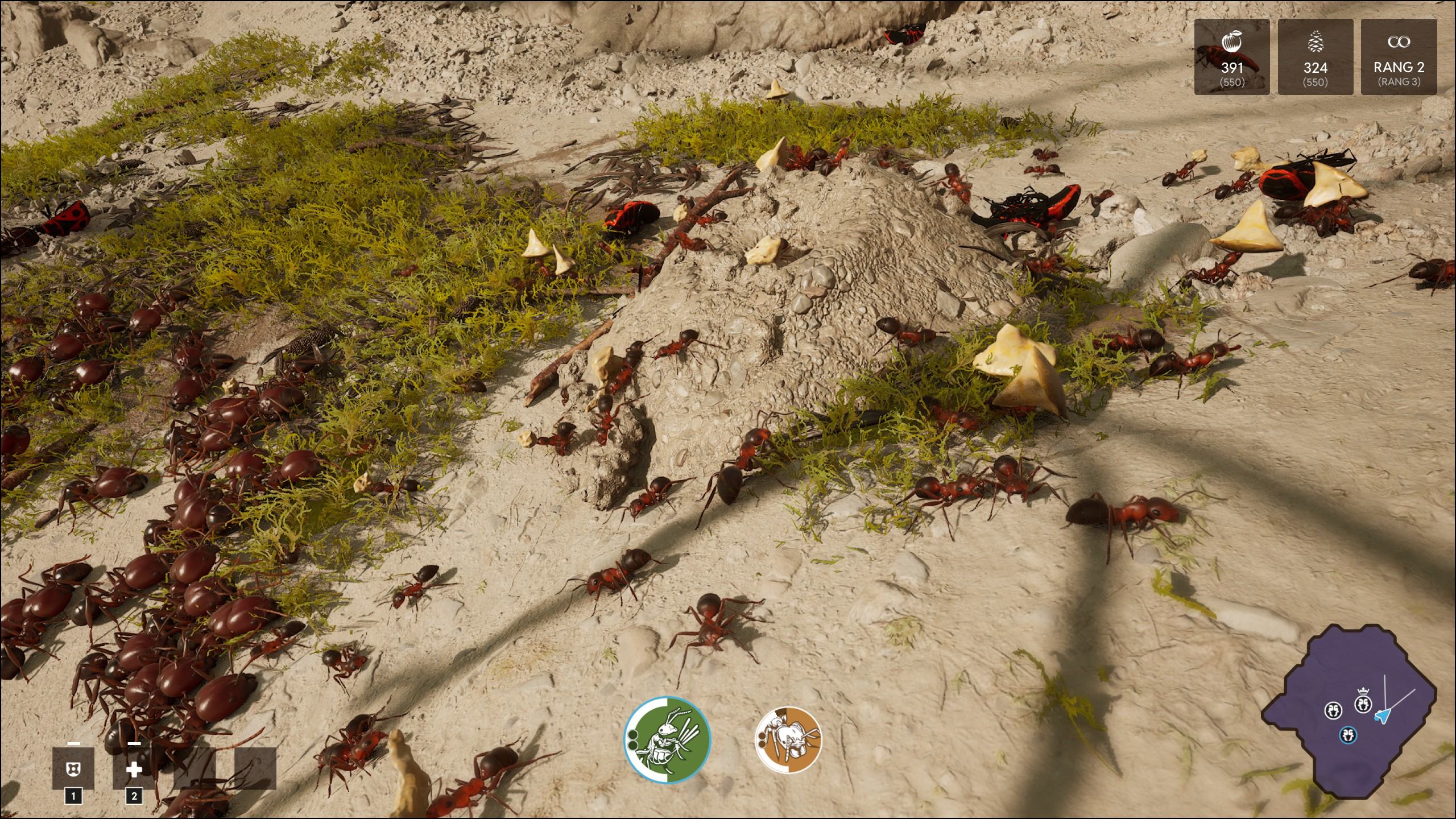Microids concluded 2023 facing significant challenges marked by disappointments and several games that did not meet expectations. Despite these setbacks, the French publisher is working towards solidifying its new philosophy adopted in 2020, which aims to deliver improved quality in future titles. Among the notable entries in its catalog is “Les Fourmis,” a game announced two years ago that marks a collaboration with renowned author Bernard Werber. Previously, there was an earlier video game adaptation of his work in the early 2000s, but advancements in technology over the past 24 years have led to significant improvements. The new “Les Fourmis” game, developed by French studio Tower Five for Microids, is set to benefit from these technological advances. I had the opportunity to play a brief ten-minute demo at Microids’ studios shortly after its announcement in 2022, and since then, the game has undergone substantial development. Recently, it was showcased at GDC 2024 in San Francisco where some selected media were able to try out a new demo. In France, Julien Chièze had an exclusive preview of this new version. Following last night’s public conference from GDC 2024, we now have additional insights shared by Renaud Charpentier, founder of Tower Five and Game Director for the project, who detailed the title’s visual impact powered by Unreal Engine 5.
OBJECTIVE PHOTO-REALISM
To achieve photorealistic rendering, the developers opted for the photogrammetry technique, which presented a significant challenge for the Rochefort studio due to its considerable impact on development. This approach necessitates a high number of polygons and ultra-detailed textures, along with advanced global lighting management. An additional challenge for the French studio is that their game integrates elements of adventure, strategy, and includes an online multiplayer component, further complicating matters. It was here that the choice of Unreal Engine 5 became evident. In 2021, developers had access to Epic Games’ beta engine version, which could already accommodate all these necessary elements for the game’s realization.
However, another obstacle arose for the developers. For a regular game, this would not be an issue; however, in the context of an ant game where everything is amplified in terms of size, they had to create assets and textures in 8K resolution, which imposes significant memory demands that consoles cannot infinitely extend. A sudden panic swept through Tower Five, but they quickly regained their composure and recalled that Unreal Engine has featured a virtual texturing system since version 4, enabling the engine to select what to display at low or high resolution. I will omit the technical details and challenges Renaud Charpentier shared during GDC, but after weeks of testing, they modified the C++ source code to adapt the system to their needs. Renaud Charpentier even drew a small analogy with Stanley Kubrick’s adaptation of his equipment to achieve his cinematic vision in “Barry Lyndon,” reminding us that video game development is also about crafting and daily learning with available tools.
As a result, the game is visually stunning, leaving journalists who have played it thoroughly impressed; however, the gameplay must also meet high standards. Tower Five and Microids took a clear, precise approach from the start: aiming to please the masses, especially by incorporating elements of real-time strategy (RTS). It’s important to note that the game is based on Bernard Werber’s novels, which have sold over 35 million copies worldwide in 35 languages. This makes the inclusion of RTS elements a niche rather than mainstream appeal.
CRITICALLY: Making RTS Mainstream – Microids Faces Challenges and Aims for Photo-Realism with “Les Fourmis”
Since “Les Fourmis” is a game that blends adventure and strategy, primarily targeting the console home audience, the developers at Tower Five have adapted the gameplay for controllers. Their title aims to be accessible with simple controls manageable via a classic pad. Essentially, gameplay can be divided into two parts: directing our ant in real-time and managing our colony through RTS mechanics. When in third-person view, we control our ant, which can move steadily or sprint; faster movement compromises stability. Our insect can cling to all surfaces, even vertical ones, and jump, reaching seemingly inaccessible areas – an evidently quirky aspect of the game, as ants do not typically jump unless there is a specific context overlooked. Yet, accepting this quirk is part of playing a video game, where RTS elements are equally surreal.
GAMEPLAY PRIORITIZATION FIRST OF ALL
According to journalists who have had the opportunity to play it, including Julien Chièze, the control schemes for initiating tasks are straightforward and easy to understand. The objective of the game is to expand one’s colony across distinct zones, thereby creating nests. Each nest has its own capabilities, varying according to color codes: red for unit creation, with three types of ants to create—warriors for close combat, artillery that fire acid from a distance, and worker ants focused on resource and object transport. There is also a new user interface for commands, seen for the first time in this game. The orange zone manages economy, such as purchasing or building units. The purple zone handles defenses, towers, ant styles, while the blue zone manages pheromones to alter other colony ants’ abilities. All these interconnected mechanics will allow players to command their legions of ants for resource gathering and colony expansion or even attacking other insects.
Microids’ game does not hesitate to draw inspiration from Pikmin 4 in terms of command management mechanics. Players can select specific types of ants or manage entire legions at once. The option to group different ant types together or split them into separate teams allows for the efficient handling of multiple tasks, with support for up to seven swarms simultaneously. However, players must be mindful of environmental factors that can pose obstacles or dangers to the ants, particularly water bodies which are lethal as ants drown instantly upon contact. A criticism has been raised regarding the somewhat static environments; there is no natural movement such as wind through foliage, giving the impression of navigating a still, frozen scene. While it’s possible that the game could evolve before its release, at present, the mastery of lighting stands out as one of the game’s strengths. I look forward to playing it soon and sharing my hands-on impressions.
Have any thoughts?
Share your reaction or leave a quick response — we’d love to hear what you think!



